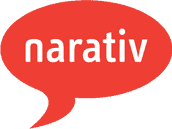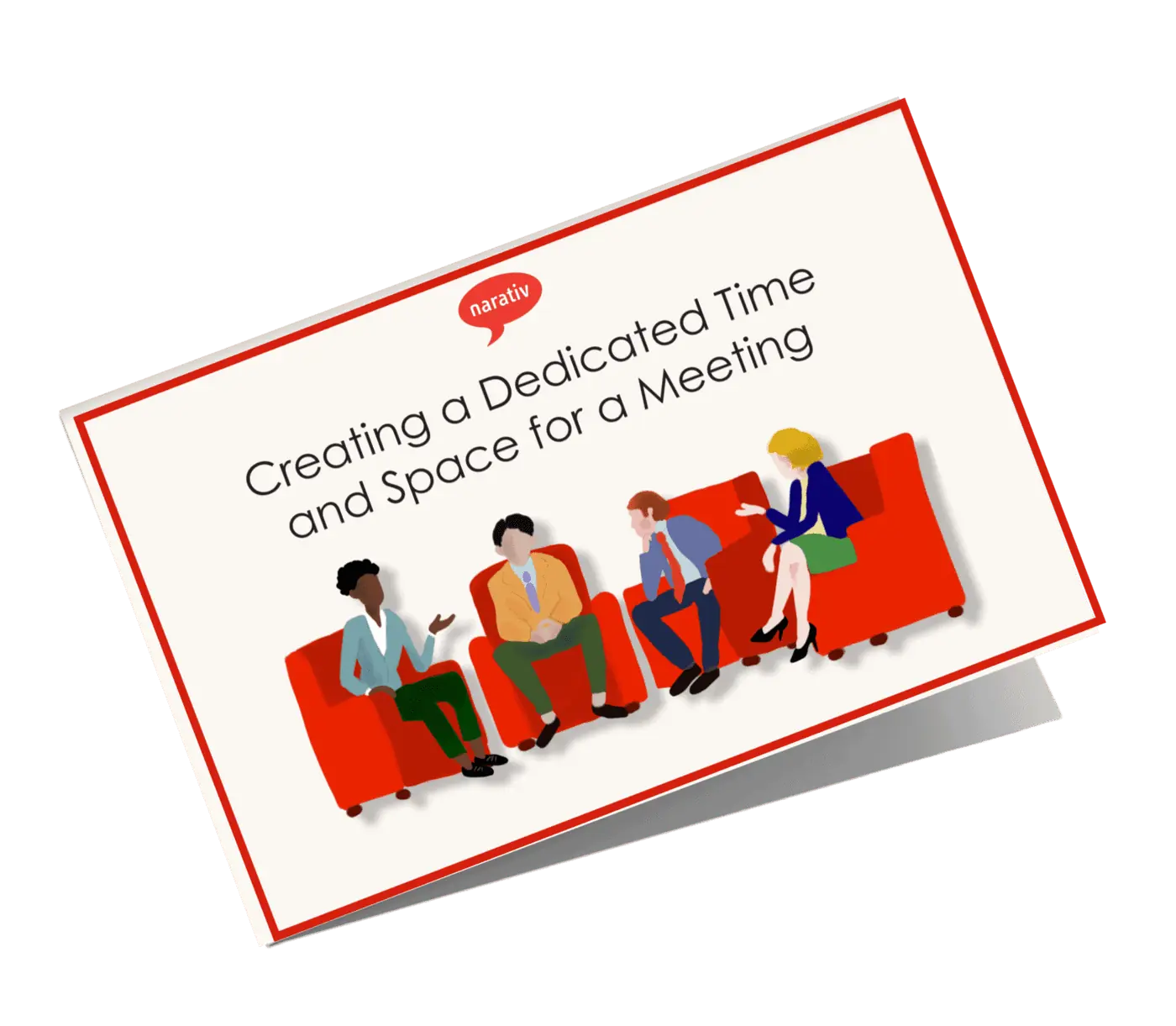Business storytelling is a tool that can vastly improve employee retention when properly applied, but it isn’t just for existing employees. Recently, Narativ CEO Jerome Deroy had the opportunity to appear on the People Managing People podcast where he and host Tim Reitsma had a conversation about how onboarding through storytelling can improve the onboarding process so employees feel a sense of belonging and purpose from day one.

Onboarding is often neglected by companies that would rather prioritize other areas. As a result, new employees are often left alone with an employee handbook and orientation checklist to get themselves settled in. Not exactly a warm welcome that makes people want to stick with a company long-term!
During their conversation, Jerome and Tim made clear that there are much better ways to go about welcoming new employees and getting them up to speed, creating better outcomes down the road.
Jerome and the Terrible, Horrible, No Good, Very Bad Onboarding
Jerome can attest to how quickly a company can lose an employee’s investment in the job if they fumble the onboarding process. In his first job out of business school for an international bank in Hong Kong, his entire first 48 hours were spent sitting in a windowless conference room reading through two massive employee handbooks. Once he finished with those, he spent even more time in the same room watching orientation videos. All told, it was a full week before he et anyone relevant to his job. Looking back, he attributes this experience with his later disengagement.
“I might have been what we now are calling ‘quiet quitters’ for a while in the company I was working for,” Jerome admitted sheepishly as he described how that disengagement led to him quitting the company a few years later in search of a more creative and meaningful outlet.
According to Jerome, the first week sets the tone for an employee’s entire time at a company. A bad enough introduction to a new job can have even the most excited and passionate new employee searching LinkedIn for a new job within the week.
So how do you enhance that process?
Stories First, Handbook Later
As business people, we all like to be efficient. So, it only seems natural that the first step when introducing someone to the company should be to give them a handbook and have them read through to understand company policies and values. However, as Jerome and Tim discussed, immediately throwing new hires into dry handbook training with no relevance to their actual job is a very quick way to lose their engagement.
Your employee onboarding process can make or break the relationship new hires form with your company. A new employee’s first experience with the company should involve the person in charge of their orientation getting to know them and in turn sharing stories that illustrate what the job is like and the values of the company.
“If I get to hear stories about what my job is like and I hear them from the people who are actually involved with my job … then I start to get a more embodied experience of the culture of this organization,” Jerome said.
Stories can have a huge impact on the attitudes of incoming employees. An employee who is introduced to their job by someone who is truly connected with the company and can help them enter their new workplace with a real sense of value and purpose will be far more able to complete their training with a sense of excitement that will carry into their work.
Of course, you can ask them to read the employee handbook later on, but give them a reason to feel invested first before giving them the boring stuff.
Orientation by Example
Onboarding doesn’t end with the first orientation introduction and compliance materials. An employee’s early experiences with a company can also influence their engagement and attitude.
During the podcast, Jerome shared a story about a company leader he was working with who was concerned that no one was paying attention during their meetings. When Jerome sat in on a meeting to assess what was wrong, he noticed that the leader brought their devices into the meeting and was continually pausing to respond to messages. In turn, the employees attending the meeting were working or messaging on their own devices throughout the meeting.
Modeled behavior like this, Jerome explained, affects employee engagement at every level, but it can be especially damaging to the attitude of a new employee. Just imagine coming to the meeting ready to engage and take notes and then seeing everyone around you immediately disconnect from the meeting to work on their devices. If nobody else is engaged, the new employee will quickly become disengaged as well.
Company leaders can model better behavior in a lot of ways—but most of those ways come down to listening. In the previous example, the leader could encourage better engagement in meetings by putting away devices, holding off on responding to messages during the meeting, and attentively listening and encouraging meeting attendees to be active in sharing their ideas.
Modeling listening behavior in any company interaction will not only make new employees feel valued and comfortable enough to share ideas and issues, but it will also demonstrate how they ought to listen to others within the company, encouraging them to be more open to the thoughts and ideas of the people they work with.
If you can get in the habit of modeling positive listening behavior to new employees early on, it will save you the trouble of helping a company full of people unlearn bad habits and attitudes later on.
Check Back and Re-Engage
In an episode of Narativ’s Leadership Story Talks podcast that served as a follow-up to this interview, Jerome and co-host Julienne touched on another important aspect of onboarding: The onboarding period is an ideal time to learn from the new hire by listening.
They suggested doing a 90-day engagement survey of new hires to get an idea of how the onboarding process went, but also indicated that new hires can often be sources of fresh ideas and perspectives that might help to get older employees unstuck from rigid thought processes.
As Julienne explained, “Onboarding is not just for the new hire. It re-engages everybody in the departments and the organization if it’s done right.”
If everyone in the organization is encouraged to not just tell stories, but to also listen to stories from new hires, there will be a constant refreshing of perspectives that will be beneficial to everyone no matter how long they’ve been in the company.
Make Time for Onboarding Through Storytelling
Later on in the People Managing People interview, Jerome and Tim discussed overcoming the issue that sometimes arises when the people in charge of onboarding are simply too busy to sit down and connect with every single employee. This does happen and is a legitimate problem, but there are a few things that can be done.
The simple, messy solution is to just make time to prioritize onboarding. At one point Tim commented that it costs a lot less time and money to properly onboard than it does to have new employees get fired or quit later on and have to hire somebody else. It’s tricky to rearrange a busy agenda to make the time for a direct, personal orientation for every new hire, but it could be what makes all the difference.
If you really can’t make the extra time, or if your company has far too many new hires for a personal orientation to be reasonable, it can be useful to remember how many different mediums for connection are at our disposal in the modern age. As an example, Jerome talked about a company that was able to implement an internal podcast to introduce new hires to the organization and to share stories to help get them engaged from the start.
“People learn better with stories than they do with data,” said Jerome.
The company in question was able to vastly improve employee engagement, and do it in a way that didn’t create too much extra work in their busy schedule. A creative leader will likely be able to come up with something similar to fit in within their own company dynamic.
Search Your Own Story
To close the interview, Tim asked Jerome to share one thing that will help managers and leaders really own and improve their onboarding experience.
Jerome’s advice was to examine your own story and identify the best onboarding experience you’ve ever had in your life. Think about what was good and what was missing and use that to shape the way you approach your onboarding interactions with new employees.
If you would like to learn more about how to bring storytelling in at every level of your company to improve employee engagement, you can visit us here or schedule a consult with our CEO, Jerome Deroy.



